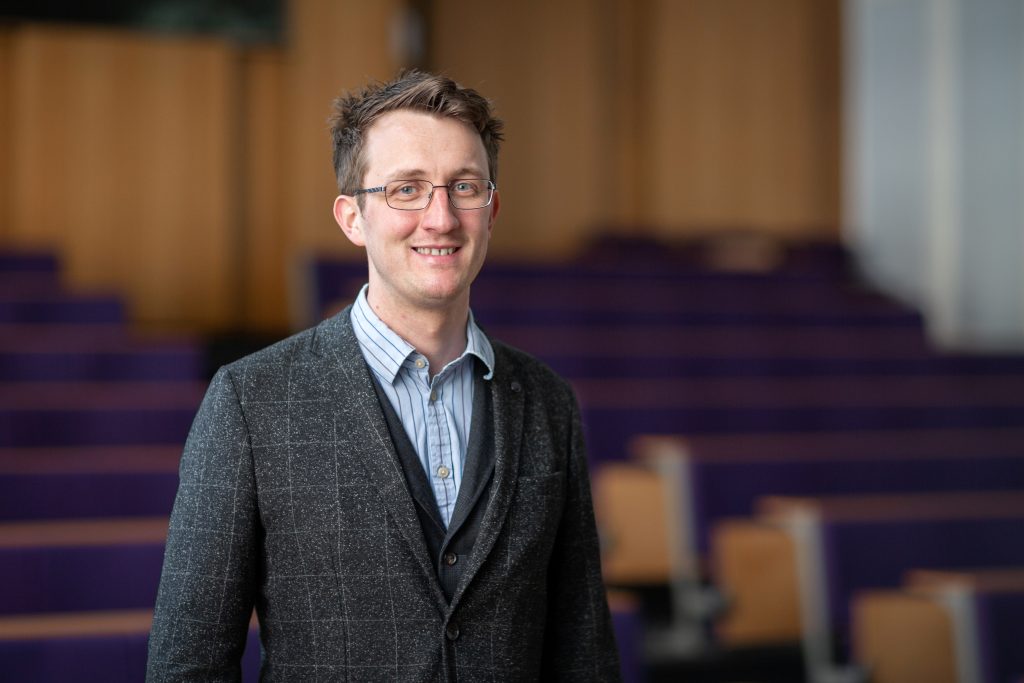
To celebrate LGBT STEM Day 2020, Dr Ben Britton, Reader in Metallurgy and Microscopy – and RAEng Research Fellow, has shared more about LGBT+ STEM Day, his research and how simple acts from everyone can go a long way.
Can you tell us more about yourself and your research?
Hi, I’m Ben and my pronouns are he/him. I’m a Reader in Metallurgy and Microscopy, and I lead a group who try to understand how metals are processed, perform and ultimately fail in high-risk high-value applications, such as nuclear power plants, aeroengines, and the petrochemical industry. We work together to combine experiments and simulations together, collaborating with folks across Imperial, in industry and across the world. I also tweet a bit (@bmatb), teach a bit, and have other interests.
What does LGBTSTEMDay mean to you and why is it important for everyone?
I am not only a material scientist and engineer, I’m also a gay man. Many folks may suggest that my sexuality and gender identity have no relevance for my work. This is incorrect, as numerous surveys and academic papers tell a different story. There is substantive co-correlation of evidence that the relationships we form and who we connect with influence our successes in work and beyond. LGBTSTEMDay provides people who identify as ‘not straight’ and/or ‘not cisgendered’ (i.e. those whose current gender identity matches their gender identity at birth) to celebrate contributions of those people like us, create communities, and create meaningful changes to the practice of science, technology, engineering and maths across the world.
On a more personal level, I also used #LGBTSTEMDay to ‘come out’ more widely in public. As frankly, it is EXHAUSTING to hide this part of your identity and to worry about the implications on your career. So #LGBTSTEMDay has, as I shared in a public talk at the College, entitled me to say: go and read my b****y blog piece – ‘So it’s #LGBTSTEMDay…so what?’
Who are your greatest role models in STEM?
This is always a challenge. Most historical queer figures have had their queer identity written out of the history books. Additionally, one of the privileges for me, as a white man in STEM, is that there are many people like me who have ‘succeeded’ and can be seen in positions of power. This also highlights the imbalance in our midst, especially for those who are at the intersection of minority identities and are doubly marginalised (e.g. people who identify as Black and queer).
There are efforts to correct this, as, for instance, Dr Jess Wade (and many others) have been strengthening representation individuals from marginalised groups on Wikipedia, and so we can now more easily identify and empathise with existing role models in our field. There are also professional networks, such as IOM3Pride, LGBTQ+ STEM, Pride in STEM, 500 Queer Scientists and many more where LGBTQ+ people can find people like them, share experiences, and benefit from networking opportunities that they have been (directly and indirectly) excluded from.
How can everyone be an ally and action for change?
In my opinion, the ‘ally’ objective is overrated. I would prefer for people to want to be decent human beings. In that light, I want co-conspirators who are willing to say that the status quo is not good enough, and to agitate for change. There is no reason why we should sustain and support systems that establish marginalisation of individuals based upon their sexual orientation and gender identity, as well as other protected characteristics (and socio-economic class).
There are old and new barriers that actively exclude LGBT+ people and members of other minority groups from participating, and these exist both within the Department, within the College, in the Profession and in wider society. Dismantling these all at once is a daunting task, but simple acts can go a long way, and lots of the work to identify these issues has been done already. So if you want a more refined list of recommendations, you should read the Royal Society of Chemistry, Institute of Physics and Royal Astronomical Society report on Exploring the Workplace Climate for LGBT+ Physical Scientists.